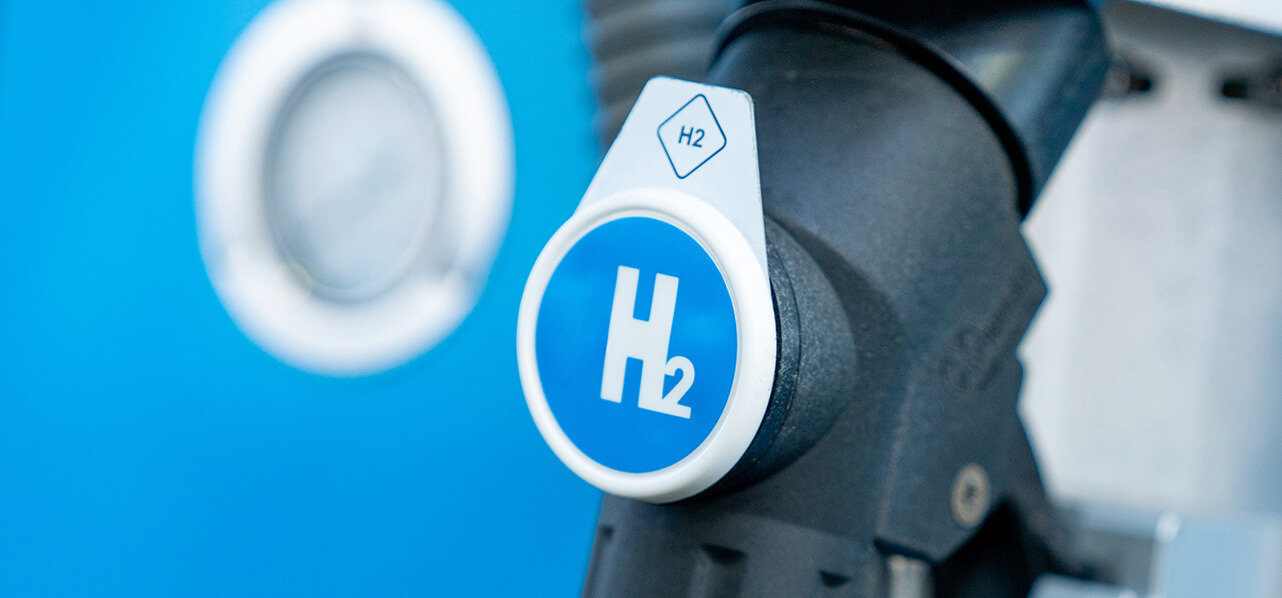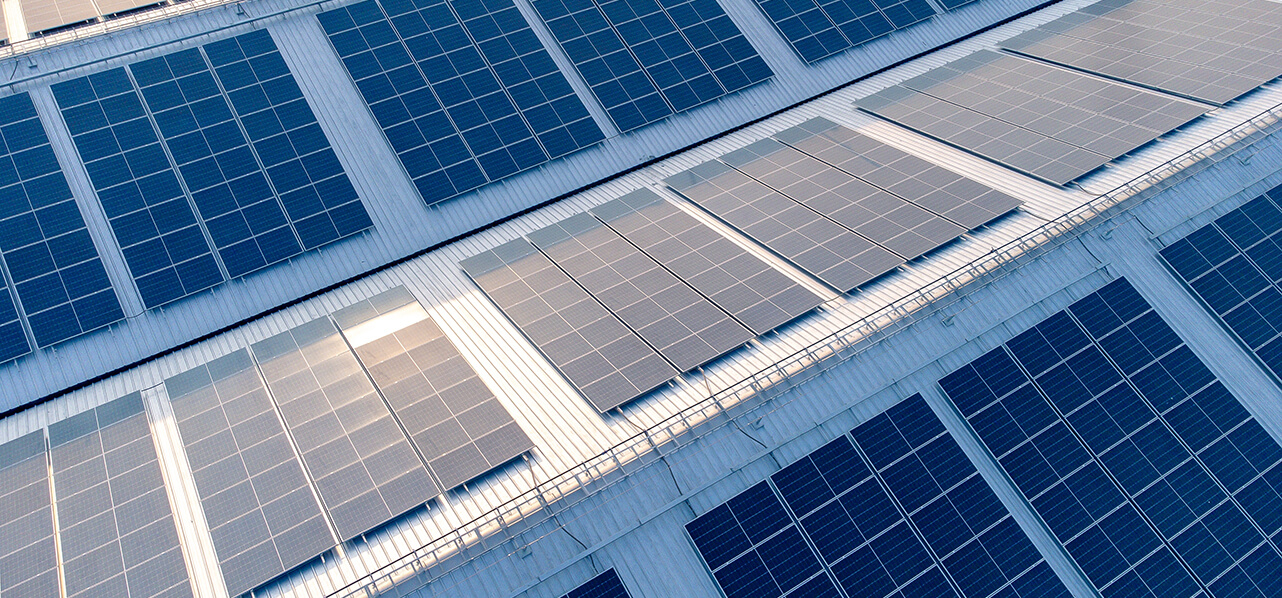Partner Madrid
"The purpose of the Hydrogen Roadmap is to identify the challenges and opportunities for robust development of renewable hydrogen in Spain, providing a series of measures aimed at boosting investment."
In November 2020, the Government announced that it would allocate €1.5bn to boost the use and production of renewable hydrogen by 2023 through the European Recovery Instrument (“Next Generation EU”). At the same time, MITECO launched a public “call for interest”³ which closed on 19 December 2020. This was so all interested parties could identify and locate viable renewable hydrogen projects in Spain, detailing their impact on the value chain and industrial development, job creation, as well as their transformative effect on the decarbonisation of the economy and on social and territorial cohesion.
The purpose of the Hydrogen Roadmap is to identify the challenges and opportunities for robust development of renewable hydrogen in Spain, providing a series of measures aimed at boosting investment. Through these measures, the Government aims to create a framework that will allow Spain to position itself as a future technological leader in the field of green hydrogen, taking into consideration its potential to play a relevant role in energy storage and the decarbonisation of those economic sectors that are most difficult to electrify.
However, there are other strategic and legislative documents that complete Spain’s Strategic Energy and Climate Framework, and which take into account the role of green hydrogen as a key energy vector for achieving climate neutrality in 2050. These include the National Integrated Energy and Climate Plan (“PNIEC”) 2021-2030⁴, the Draft Law on Climate Change and Energy Transition⁵, the Long-Term Decarbonisation Strategy 2050⁶, the Fair Transition Strategy⁷ and the Energy Storage Strategy⁸.
In this article, we will briefly summarise the main challenges identified in Spain in relation to the development of the hydrogen sector (with an emphasis on green hydrogen), the key measures proposed in the Hydrogen Roadmap and other documents of the Strategic Energy and Climate Framework to address potential challenges, and the financing and public-private partnership mechanisms predicted to provide impetus for the development of projects.
SPAIN’S RENEWABLE HYDROGEN TARGETS
According to the Hydrogen Roadmap, “nowadays, hydrogen consumption in Spain is around 500,000 t/year, mainly grey hydrogen, used as a raw material mainly in refineries (around 70%) and chemical product manufacturers (50%), with the remaining consumption corresponding to sectors such as metallurgy“.
"The Hydrogen Roadmap relies on Spain's potential to position itself as a technological leader in the production and use of green hydrogen, given the advantageous climate and large areas available for the installation of renewable energy projects."
Nevertheless, the Hydrogen Roadmap relies on Spain’s potential to position itself as a technological leader in the production and use of green hydrogen, given the advantageous climate and large areas available for the installation of renewable energy projects (solar or wind).
In this regard, the Hydrogen Roadmap defines ambitious targets that can be framed (and contrasted) within the three phases defined in the EU Hydrogen Strategy:
| EU Hydrogen Strategy | Spanish Hydrogen Roadmap | |
|---|---|---|
| First phase (2020-2024) | Installation of 6 GW of electrolysers and production of 1m tonnes of renewable hydrogen in the EU. | Installation of 300-600 MW of electrolyser plants. |
| Second phase (2025-2030) | Installation of 40 GW of electrolysers and production of up to 10m tonnes of renewable hydrogen in the EU. | • Installation of at least 4 GW of electrolyser plants. • Industry: minimum renewable hydrogen contribution of 25% of the total hydrogen consumed in 2030 in all industries. • Transport: o 150-200 fuel cell buses in 2030. o 5,000-7,500 light and heavy-duty fuel cell vehicles for freight transport in 2030. o 100-150 public access hydrogen stations by 2030. • Power sector/energy storage: commercial hydrogen projects operational by 2030 for electricity storage and/or use of surplus renewable energy. |
| Third phase (2030-2050) | Maturity and large-scale development of renewable hydrogen technologies. | • Economy based on the production and application of renewable hydrogen. • Competitiveness of hydrogen production using renewable energy compared to other production technologies. • Decarbonisation of society by 2050. • Increased manageability of renewable energies. • Quality, sustainable and competitively priced energy supply. |
"Of note among the regulatory measures is a first package aimed at addressing the regulatory barrier that currently exists as a result of current legislation that considers hydrogen production to be an industrial activity."
To achieve these objectives, a series of measures must be implemented as soon as possible to enable the development of hydrogen technologies and a market for the entire hydrogen value chain: production, storage/transport and usage (whether as a fuel, energy vector or as raw material for industry).
KEY CONTENT: ACTION LINES DEFINED IN THE HYDROGEN ROADMAP
In May 2020, the Council of Ministers submitted the Draft of the Climate Change and Energy Transition Law (the “Draft Law”) to the Spanish Parliament, which is currently being debated prior to its approval. It includes a provision for the approval of specific plans to promote the penetration of renewable gases, including hydrogen⁹. In addition, the Draft Law contemplates a series of measures relating to the promotion of renewable gases to ensure compliance with the targets established in the PNIEC.
The Hydrogen Roadmap includes and extends the measures relating to renewable hydrogen anticipated by the PNIEC and the Draft Law, defining 60 specific measures, divided into 4 blocks (regulatory instruments, sectoral instruments, cross-cutting instruments and promotion of R&D), which should serve as a basis for achieving the aforementioned targets.
Regulatory measures
Of note among the regulatory measures is a first package aimed at addressing the regulatory barrier that currently exists as a result of current legislation that considers hydrogen production to be an industrial activity (specifically a chemical industry for the production of inorganic gas). This means that the implementation of hydrogen production infrastructure is restricted to land classified as industrial, and is subject to stringent environmental impact assessments, regardless of whether renewable technologies are used for production.
To alleviate this and other administrative obstacles, the Hydrogen Roadmap proposes to (i) modify the classification of on-site renewable hydrogen production at refuelling stations; (ii) analyse the different procedures for processing the operation and execution of small-scale green hydrogen production facilities and to evaluate their simplification without undermining environmental protection and ensuring sustainability criteria; and (iii) promote the development of regulatory measures to simplify and facilitate the development of direct electricity lines dedicated to renewable hydrogen production within the framework of electricity sector regulations, as well as hydroducts transporting renewable hydrogen within the framework of hydrocarbon sector regulations.
On the other hand, a specific measure is included concerning the establishment of a Guarantee of Origin System for renewable hydrogen in collaboration with other European countries in order to allow the production method of hydrogen to be traced and to provide appropriate price signals to consumers.
In addition, to address the barrier of high production costs, the positive environmental effects of renewable hydrogen will be considered in relation to green taxation and, in particular, indirect taxation. In fact, the Automotive Industry Value Chain Tax Plan¹⁰ already proposes to analyse the possibility of a medium-term reform of the main vehicle taxes, such as the so-called road tax (“IVTM”) and registration tax (“IEDMT”), to introduce a greater environmental orientation in the determination of taxation, in coordination with the Territorial Administrations and in the context of the reform of the Autonomous and Local Financing Systems.
"Another key factor is the will to promote, in general, the consumption of renewable hydrogen in the transport sector, through the transposition of Directive (EU) 2018/2001, on the promotion of the use of energy from renewable sources."
Sectoral measures
Some of the most important sectoral measures for the different components of the hydrogen value chain are to: (i) establish a national statistical system on hydrogen consumption and production in Spain, differentiating by types of hydrogen and by consumption sectors; (ii) evaluate the feasibility of establishing renewable hydrogen penetration targets for the period 2025-2030 in sectors where electrification is inefficient; (iii) design financial instruments to support Spanish hydrogen-intensive industries to adapt processes and infrastructure for the continuous supply of renewable hydrogen; (iv) develop long-term national decarbonisation strategies based on renewable hydrogen; and (v) identify current hydrogen consumption locations, promoting and encouraging the creation of hydrogen “valleys” or “clusters”.
Additionally, another key factor is the will to promote, in general, the consumption of renewable hydrogen in the transport sector, through the transposition of Directive (EU) 2018/2001, of 11 December 2018, on the promotion of the use of energy from renewable sources (“RED II”)¹¹.
For example, in the field of land transport, the development of incentive schemes for vehicle purchase and infrastructure development (in the form of tax allowances, minimum purchase quotas, etc.), the development of a specific plan to encourage the penetration of fuel cell solutions in urban public transport, and the transposition of Directive (EU) 2019/1161 on the promotion of clean road transport vehicles for low-emission mobility are all expected. Furthermore, in line with the recommendations of the Report on Current Regulation and Legislative Development Needs (November-2019) prepared by the Market Unity Sub-Working Group on Hydrogen Technologies¹², it is envisaged to develop specific legislation for hydrogen plants, specifying the administrative requirements and delimiting the permits necessary for their construction and management. These measures also include some of the recommendations of the Report on Legislative Recommendations for the Hydrogen Sector in Spain prepared by HyLaw¹³.
The maritime and air transport sectors also have specific measures aimed at incentivising the penetration of fuel cells and synthetic fuels produced from hydrogen, or the development of a national port infrastructure for hydrogen refuelling. We presume that in all three areas of transport, the so-called MOVES Plans for incentives and promotion of sustainable mobility¹⁴ will play an important role.
We also expect to see measures that favour the integration of energy vectors, such as the development of methods and systems that allow the injection of hydrogen into existing gas transport infrastructure (which would simplify the transport of hydrogen without the need to develop new infrastructure). The possibility of involving electrolysers in adjustment services as a means of storing electrical energy is also being considered.

For the period 2021-2023, €1.5bn of public funding would be allocated to boost renewable hydrogen.
Regarding the above, the Energy Storage Strategy defines an assortment of measures specifically linked to the promotion, development and deployment of storage technologies and infrastructure for renewable hydrogen.
Cross-cutting measures and promotion of R&D
For the aforementioned measures to be successful, they must be supported by cross-cutting instruments and the promotion of R&D, allowing the establishment of a suitable technical and technological framework for the fulfilment of the defined objectives. Thus, the Hydrogen Roadmap aims to be a dynamic instrument that is updated every three years in order to correctly evaluate the degree of success of the measures implemented and to define, if necessary, new actions.
Exclusive lines of financing will be provided for projects in the renewable hydrogen value chain in the State Plans for Scientific and Technical Research and Innovation, and the role of the National Hydrogen Centre (“CNH2”) as a leading public R&D centre will be strengthened.
"The Hydrogen Roadmap mentions a number of existing state public financing instruments that could be used to finance renewable hydrogen projects."
KEY CONTENT: FINANCING MECHANISMS AND PUBLIC-PRIVATE PARTNERSHIP
Main public funding instruments
On 19 November 2020, the Spanish Prime Minister announced that, for the period 2021-2023, €1.5bn of public funding would be allocated to boost renewable hydrogen, through the Next Generation EU, endowed with €750bn for the period 2021-2027¹⁵ (of which €140bn will be allocated to Spain in the form of transfers and loans). Said amount is only an advance on the large amount of public funding that the Government will need to deploy between now and 2030 if it is to provide proportionate support for the public and private investment expected to take place in that period (around €8.9bn).
The Hydrogen Roadmap mentions a number of existing state public financing instruments that could be used to finance renewable hydrogen projects:
- CIEN Projects¹⁶ in the form of partially reimbursable grants aimed at financing large industrial research and experimental development projects with budgets of between €5-20m, developed by business consortia¹⁷;
- Science and Innovation Missions¹⁸ (total allocation of €70m), in the form of grants for strategic sectoral business innovation initiatives with budgets of between €5-10m developed by Large Companies, and between €1.5-3m developed by SMEs;
- The MOVES II Plan¹⁹ (total allocation of €100m), in the form of subsidies for the purchase of vehicles (between €600 and €15,000, depending on the type of vehicle) and the implementation of infrastructure for sustainable vehicles (with eligible costs of up to €500,000); and
- The Programmes of the General Directorate for Industry and Small and Medium-Sized Enterprises for financial support to Industry²⁰.
In addition, it is expected that the existing financing instruments within the framework of the European Union, in addition to the Next Generation EU, could be partially channelled to finance renewable hydrogen projects at a national level. Among the most relevant, the Innovation Fund Programme (€10bn for the period 2020-2030)²¹, European Green Deal Call (€1bn for the period 2014-2020, with an additional call for €1bn in 2021)²², Horizon Europe (€95.5bn for the period 2021-2027)²³ or Clean Hydrogen Alliance (€430bn for the period 2021-2027)²⁴.
"One of the structural reform policies announced in the presentation of the Recovery Plan is to develop a decarbonised, competitive and efficient energy sector within the framework of a fair and inclusive energy transition, in which the role of renewable hydrogen is highlighted."
Recovery, Transformation and Resilience Plan and implementing legislation
Following the European Council’s approval of the Next Generation EU, in October 2020 the Government presented the Recovery, Transformation and Resilience Plan (Recovery Plan), which will guide the implementation of €72bn of European funds until 2023 and mobilise 50% of the resources derived from the Next Generation EU during this period.
One of the structural reform policies announced in the presentation of the Recovery Plan is to develop a decarbonised, competitive and efficient energy sector within the framework of a fair and inclusive energy transition, in which the role of renewable hydrogen is highlighted.
In this context, on 31 December 2020, Royal Decree-Law 36/2020 of 30 December was published in the Official State Gazette, approving urgent measures for the modernisation of the Public Administration and for the implementation of the Recovery Plan, Transformation and Resilience (RDL 36/2020), which aims to: (i) facilitate the planning, budgeting, management and execution of activities that can be financed with European funds (especially those coming from the Next Generation EU); (ii) establish measures for the implementation of the Recovery Plan; and (iii) incorporate generic instruments aimed at reducing legislative and administrative red tape, as well as modernising measures for Public Administration, allowing a more agile and efficient management in order to facilitate the absorption of funds.
RD 36/2020 defines the Recovery Plan as the “guiding instrument for the design and implementation of the strategic objectives, reforms and investments which, related to the Recovery and Resilience Mechanism envisaged in EU legislation, will serve to promote Spain’s economic, social and territorial cohesion, strengthen the country’s social and economic resilience, recover the industry sector and mitigate the social impact following the crisis caused by COVID-19 and promote the ecological and digital transformation”. It also sets out the nature and content of the Recovery Plan (which will focus on four cross-cutting axes – ecological transition, digital transformation, gender equality, and social, economic and territorial cohesion), and establishes its approval mechanism (by the Council of Ministers, at the proposal of the Ministry of Economic Affairs and Digital Transformation, once the autonomous communities, local entities and the most representative business and trade union organisations at state level have been heard). In order to ensure the proper implementation of the Recovery Plan, RD 36/2020 has set up a series of governance structures, including a Commission, a Technical Committee, a Sectorial Conference, the possibility of establishing participation forums and high-level groups of relevant stakeholders, etc. Likewise, RD 36/2020 provides that the ministerial departments will draw up, on the basis of the templates approved by the Technical Committee, a strategic planning instrument for the management of Recovery Plan projects, which must contain the essential lines of the strategy, objectives and resources necessary for the optimum absorption of European funds linked to Recovery Plan projects.
"PERTES will likely play a significant role in developing renewable hydrogen projects, as entities linked to the development of a PERTE will be registered in the newly created State Register of entities interested in PERTES."
As an example, among the numerous novelties introduced by RD 36/2020 (including a large number of regulatory modifications affecting various matters), the following should be highlighted, due to their probable link with the financing and public-private partnership mechanisms that renewable hydrogen-related projects will be able to use:
1) Public-private partnership
Among the public-private partnership mechanisms provided for in RD 36/2020, Strategic Projects for Economic Recovery and Transformation (PERTES) stand out. It is an accreditation for projects that have a “strategic nature with a great capacity to drag forward economic growth, employment and competitiveness of the Spanish economy”, and which may be considered as a single project (clearly defined in terms of its objectives and implementation modalities), or as an integrated project (a group of projects inserted in a common structure, work plan or programme that share the same objective and are based on a coherent systemic approach). PERTES accreditation shall be made by agreement of the Council of Ministers, at the proposal of the head of the relevant department, on the basis of the fulfilment of a series of requirements by the projects: (i) that they represent a significant contribution to economic growth, job creation and the competitiveness of industry and the Spanish economy, (ii) that they are of a significant innovative nature or provide significant added value in terms of R&D, (iii) that they favour the integration and growth of SMEs, as well as the promotion of collaborative environments, (iv) that, where appropriate, they make a specific, clear and identifiable contribution to one or more of the objectives of the Recovery Plan or other stimulus programmes.
In all likelihood, PERTES will play a significant role in developing renewable hydrogen projects, as entities linked to the development of a PERTE will be registered in the newly created State Register of entities interested in PERTES. Inclusion in this register may be considered a requirement to benefit from subsidies, in the event that this is envisaged in the regulatory bases or the relevant call.
RD 36/2020 also introduces another series of relevant issues in relation to the public-private partnership instruments for the implementation of the Recovery Plan. It provides:
- That the regulatory bases for the granting of subsidies for activities linked to the Recovery Plan may establish that groups of natural or legal persons, public or private without legal personality, which meet certain requirements, may be eligible to be beneficiaries;
- For the possibility of creating consortiums (subject to a favourable report from the Technical Committee) for the implementation or execution of Recovery Plan projects; and
- That the execution of a works concession or service concession contract subject to harmonised regulation relating to a project under the Recovery Plan may be awarded directly to a mixed-economy company in which a majority of public capital and private capital are combined, subject to a number of conditions.
"It is foreseen that the regulatory bases for subsidies financed with European funds may incorporate the call for such subsidies, eliminating some bureaucratic requirements for the processing of the regulatory bases."
2) Financing mechanisms (subsidies)
RDL 36/2020 establishes a series of measures aimed at boosting subsidies that can be financed with European funds. These include the following:
- Exemption from the obligation to obtain (i) authorisation from the Council of Ministers for those subsidies and grant to which the general state subsidy regulations apply, (ii) authorisation from the Ministry of Finance for the granting of loans and prepayments at an interest rate lower than that of the Debt issued by the State in instruments with a similar term, and (iii) a report from the Ministry of Finance for the granting of subsidies in which reasons of public, social, economic or humanitarian interest are accredited, or other duly justified reasons that make it difficult to call for them to be made public;
- It is foreseen that the regulatory bases for subsidies financed with European funds may incorporate the call for such subsidies, eliminating some bureaucratic requirements for the processing of the regulatory bases;
- The possibility of awarding non-competitive subsidies is envisaged for those subsidies whose purpose is to finance specific actions or situations that do not require a comparative assessment with other proposals. In these last cases, the awarding of subsidies will be subject to the general system of competitive concurrence provided for in the general subsidy regulations;
- To justify the application of subsidies related to the use of European funds, (i) the economic threshold for the presentation of a simplified supporting account by the beneficiary of the subsidy is increased to €100,000, (ii) it is provided that the regulatory bases may exempt the obligation to present invoices for amounts of less than €3,000, (iii) the limit for accrediting compliance with tax and Social Security obligations under the Subsidies Regulations is increased to €10,000, and (iv) the commitments set out in applications that must be accompanied by economic reports will be made more flexible, in relation to allowing compensation between budgeted items, provided that they are aimed at achieving the purpose of the subsidy; and
- Early approval without available credit is permitted for subsidies financed with European funds, excluding the application of certain requirements established in the general subsidy regulations, as long as it is accredited that the necessary budget amendment has been requested for the disposal of the applicable credit and the granting of the subsidy is subject to the approval of this amendment.
"In this "call of interest", the MICT received information on 28 proposals submitted by 26 different companies, of which 20 projects had a defined location."
Additionally, RD 36/2020 provides the following two newly created Funds:
- The Ecological Restoration and Resilience Fund (FRER), which aims to implement measures to support the pursuit of the objectives to achieve a transition to a greener productive and social model of the Recovery Plan within the scope of the Ministry for Ecological Transition and the Demographic Challenge. In particular, these objectives are in terms of pollution prevention, promoting the use of clean technologies, and encouraging less polluting and more sustainable consumption habits, in accordance with the circular economy policy. In this regard, the call for grants under the FRER is envisaged, as well as the financing of annual and multiannual actions related to the matters included therein. In addition, the ERDF will act as a co-financing instrument to ensure territorial cohesion; and
- The Carbon Fund for a Sustainable Economy (FES-CO2 or FCPJ) , which aims to generate low-carbon and climate-resilient economic activity, promoting, among others, technological development for the decarbonisation of key sectors of the economy through nationwide actions. In this way, the fund will preferentially be allocated, non-exclusively, to energy efficiency, renewable energy, waste management projects and those that represent a high component of technology transfer.
SECTORAL IMPACT: ENERGY, INFRASTRUCTURE, TRANSPORT AND INDUSTRIAL
Energy
According to the Hydrogen Insights report, produced by the Hydrogen Council in February 2021²⁵, there are currently 228 hydrogen projects under development worldwide, 17 of which are production projects of more than 1 GW (with the potential to produce more than 200,000 t/year of low-carbon hydrogen). Of these projects, 105 are in Europe.
At a national level in Spain, prior to the drafting of the Hydrogen Roadmap, the Ministry of Industry, Trade and Tourism (MICT) carried out a “call of interest” with the aim of identifying hydrogen projects that could be considered “Important Projects of Common European Interest” (IPCEI). In this “call of interest“, the MICT received information on 28 proposals submitted by 26 different companies, of which 20 projects had a defined location.
Since then, numerous projects related to renewable hydrogen at different phases of the value chain have been appearing in the press. Below is a brief table showing a selection of these:
| Project | Power | Location | Sponsor | Investment |
|---|---|---|---|---|
| 23 renewable hydrogen projects²⁶ | 2,000 MW (340 MW of electrolysers) | As Pontes, Huelva, Teruel, Almería, Almería, Tarragona, Valle del Ebro, Compostilla, Seseña, Barranco de Tirajana, Granadilla and Alcudia. | Endesa | €2.9bn |
| Photovoltaic plant with hydrogen production in León²⁷ | 400 MW (60 MW of electrolysers) | León | Enagás and Naturgy | No information |
| Wind farms with hydrogen production in Asturias²⁸ | 250 MW offshore wind farm / 1MW onshore wind farm (200 MW of electrolysers) | Asturias | Enagás and Naturgy | No information |
| Photovoltaic plant with hydrogen production at Puertollano²⁹ | 100 MW (20 MW of electrolysers) | Puerto Llano (Ciudad Real) | Iberdrola | €150m |
| Photovoltaic plant with hydrogen production in Vizcaya³⁰ | 20 MW initial - 200 MW in 2030 | Amorebieta (Vizcaya) | White Summit Capital, Castleton Commodities International (CCI), Nortegas, SENER, Bizkaia Energia | €50m (initial investment) €300m (final investment) |
| Green Hysland Project³¹ (Photovoltaic plant with industrial-scale hydrogen production) | No information (7.5 MW of electrolysers) | Island of Mallorca | Acciona, Enagás, Cemex, Government of the Balearic Islands, IDEA, Redexis, University of the Balearic Islands | €50m |
| H2PORTS Project³² (Pilot project located in the Port of Valencia to incorporate hydrogen in port logistics operations). | No information | Port of Valencia | Port Authority of Valencia, Valenciaport Foundation, National Hydrogen Centre, MSC Terminal Valencia, Grimaldi Group | €4m |
"The development of large-scale renewable hydrogen production projects over the coming years should be accompanied by proportional investment in infrastructure projects for the transport, distribution and marketing of hydrogen production."
A much more intense proliferation of renewable hydrogen generation projects is expected in the coming years to meet the Hydrogen Roadmap target of 4 GW of electrolyser power by 2030.
Infrastructure
The development of large-scale renewable hydrogen production projects over the coming years should be accompanied by proportional investment in infrastructure projects for the transport, distribution and marketing of hydrogen production.
It is not yet clear whether this development will predominantly take place through the implementation of entirely new infrastructure, or through the adaptation of existing gas infrastructure for hydrogen together with other renewable gases.
In relation to the above, some projects of interest have already been emerging, such as the Hydroduct planned by Redexis in Mallorca³³ (the first hydroduct in Spain), which would channel hydrogen production from the Green Hysland Project (7.5 MW of electrolysers), or the European cooperation project Hydrogen In Gas Grids³⁴, coordinated by the Aragon Hydrogen Foundation, whose objective is to analyse the feasibility of injecting hydrogen into existing natural gas infrastructures.
In addition, the construction of a considerable volume of projects for the storage and use of surplus renewable energy is foreseen. Among the latter, the Power to Gas projects, aimed at converting surplus renewable energy into hydrogen and other gases that can be stored stand out.
Another important role is expected to be played by the construction of hydrogen stations. While there are currently only four hydrogen stations in Spain (which are not operational for the public), it is expected that between 100 and 150 publicly accessible hydrogen stations will be in place by 2030, in easily accessible locations, spread throughout the country with a maximum distance of 250 km between them.
Transport
The commitment to the penetration of renewable hydrogen in the transport sector in Spain is great. The PNIEC aims for the share of renewable energy in the final consumption of the transport sector to be 28% (in which green hydrogen would play an important role). Therefore, the Hydrogen Roadmap sets ambitious milestones:
"Due to the demanding energy requirements of these activities and the barriers to their potential electrification, the Hydrogen Roadmap sees a great opportunity for the penetration of renewable hydrogen in the industrial sector, thanks to its energy density and low emissions."
- A fleet of at least 150-200 renewable hydrogen fuel cell buses by 2030 throughout the country, with a special focus on urban bus fleets in cities with more than 100,000 inhabitants;
- At least 5,000-7,500 light and heavy-duty hydrogen fuel cell vehicles for freight transport by 2030;
- Continuous operation of hydrogen-powered trains on at least two medium and long-distance commercial lines on currently non-electrified tracks; and
- Introduction of handling machinery using renewable hydrogen fuel cells and refuelling points in the top five ports and airports in terms of freight and passenger volume.
In addition, tax incentives for the purchase of environmentally sustainable vehicles also augur well for the private hydrogen fuel cell vehicle.
In this sector there are projects such as the SeaFuel pilot project in Tenerife³⁵, comprising more than 15 entities (including Enagás), which seeks to demonstrate the viability of hydrogen as a fuel through various electricity generation facilities with renewable energies (51 MW) associated with a hydrogen station with the potential to produce 25 kilos of hydrogen per day.
Industrial
According to the Hydrogen Roadmap, the industrial sector in Spain already consumes some 500,000 tonnes of hydrogen, mostly grey, in industrial product factories (mainly ammonia) and in refineries (located in Huelva, Cartagena, Puertollano and Tarragona).
Due to the demanding energy requirements of these activities and the barriers to their potential electrification, the Hydrogen Roadmap sees a great opportunity for the penetration of renewable hydrogen in the industrial sector, thanks to its energy density and low emissions.
Some of the industrial sectors in which green hydrogen could play a relevant role in the coming years are the refining industry (in which hydrogen is used to eliminate impurities from crude oil through hydrotreating or hydrocracking processes), the chemical industry (in which hydrogen is used as a raw material for the production of ammonia, methanol, fertilisers, biofuels, plastics, etc.) and the metallurgical industry (in which hydrogen is used as a heat source in blast furnaces, or as a reducing agent in alloys, replacing coal).
OUTSTANDING ISSUES
Despite all the measures contained in the Hydrogen Roadmap and the other instruments of Spain’s Strategic Energy and Climate Framework, there are still several outstanding issues that the Government, together with the participation of stakeholders, should address as soon as possible in order to break down existing barriers and create a suitable framework for the development of hydrogen technologies and the wider hydrogen market.
"One of the most striking points not included in the Hydrogen Roadmap, but which has been incorporated in the EU Hydrogen Strategy and in the national strategy of other countries, is the regulation of Contracts for Difference (CFD) for carbon."
One of the most striking points not included in the Hydrogen Roadmap, but which has been incorporated in the EU Hydrogen Strategy and in the national strategy of other countries such as Germany (see the corresponding articles in this series here and here), is the regulation of Contracts for Difference (CFD) for carbon. Through carbon CFDs, the state would commit to pay private investors the difference between the market price of carbon and its price under the Emissions Trading Scheme (ETS). This would agree to set a fixed price for carbon over the long term, helping to remove the uncertainty associated with swings in market carbon prices and allowing companies to develop clean technologies (such as green hydrogen) by removing price variations from the financial equation, which would otherwise force them to be more cautious in their investments.
The regulation of such contracts can be a very useful instrument to create favourable market conditions for the development of hydrogen-related technologies.
CONCLUSIONS
With the measures defined in the Hydrogen Roadmap and the Strategic Framework for Energy and Climate, Spain aims to position itself as a future technological leader in the field of green hydrogen, taking into consideration its potential to play a relevant role in energy storage and the decarbonisation of those economic sectors that present the greatest difficulty for electrification. However, the chosen path is fraught with challenges, including regulatory and technical barriers, and high production costs. These challenges will need to be tackled with equal parts strategic intelligence and public funding.
This is the sixth article in our ‘Hydrogen – What is the hype about?’ series, which provides an overview of the hydrogen sector and the strategy for its development in multiple jurisdictions. To read other articles in the series please click here.
To Opt In to WFW mailings and register for alerts on our forthcoming articles as soon as they are published, please email us here.
[1] https://www.miteco.gob.es/es/ministerio/hoja-de-ruta-del-hidrogeno-renovable.aspx
[2] https://eur-lex.europa.eu/legal-content/EN/TXT/PDF/?uri=CELEX:52020DC0301&from=ES
[3] https://energia.gob.es/es-es/Participacion/Paginas/DetalleParticipacionPublica.aspx?k=359
[4] https://www.miteco.gob.es/es/prensa/pniec.aspx
[5] https://www.miteco.gob.es/es/ministerio/proyecto-de-ley-de-cambio-climatico-y-transicion-energetica.aspx
[6] https://www.miteco.gob.es/es/prensa/ultimas-noticias/el-gobierno-aprueba-la-estrategia-de-descarbonizaci%C3%B3n-a-largo-plazo-que-marca-la-senda-para-alcanzar-la-neutralidad-clim%C3%A1tica-a-2050/tcm:30-516141
[7] https://www.miteco.gob.es/images/es/documentoetj_tcm30-514300.pdf
[8] https://www.miteco.gob.es/es/prensa/ultimas-noticias/el-gobierno-aprueba-la-estrategia-de-almacenamiento-energ%C3%A9tico-clave-para-garantizar-la-seguridad-del-suministro-y-precios-m%C3%A1s-bajos-de-la-energ/tcm:30-522653
[9] https://www.miteco.gob.es/es/ministerio/proyecto-de-ley-de-cambio-climatico-y-transicion-energetica.aspx
[10] https://www.lamoncloa.gob.es/serviciosdeprensa/notasprensa/transportes/Documents/2020/15062020_PlanAutomocion2.p
[11] https://eur-lex.europa.eu/legal-content/EN/TXT/PDF/?uri=CELEX:32018L2001&from=es
[12] https://industria.gob.es/Calidad-Industrial/seguridadindustrial/instalacionesindustriales/tecnologia-hidrogeno/informacion/informe-reglamento-desarrollo-legislativo.pdf
[13] https://www.hylaw.eu/sites/default/files/2019-02/HyLAW_%20National%20policy%20Paper_SPA_Final.pdf
[14] https://www.idae.es/ayudas-y-financiacion/para-movilidad-y-vehiculos/plan-moves-ii
[15] https://ec.europa.eu/info/strategy/recovery-plan-europe_en
[16] https://www.cdti.es/index.asp?MP=100&MS=803&MN=2
[17] https://www.cdti.es/index.asp?MP=100&MS=803&MN=2
[18] http://www.cdti.es/index.asp?MP=100&MS=902&MN=2
[19] https://www.idae.es/ayudas-y-financiacion/para-movilidad-y-vehiculos/plan-moves-ii
[20] https://www.mincotur.gob.es/PortalAyudas/RCI/Paginas/Index.aspx
[21] https://ec.europa.eu/clima/policies/innovation-fund_en
[22] https://ec.europa.eu/commission/presscorner/detail/en/ip_20_1669
[23] https://ec.europa.eu/info/horizon-europe_en
[24] https://ec.europa.eu/growth/industry/policy/european-clean-hydrogen-alliance_en
[25] https://hydrogencouncil.com/wp-content/uploads/2021/02/Hydrogen-Insights-2021-Report.pdf
[26] https://www.endesa.com/es/prensa/sala-de-prensa/noticias/transicion-energetica/endesa-contempla-desarrollo-23-proyectos-hidrogeno-verde-espana
[27] https://energetica21.com/noticia/enagas-y-naturgy-impulsan-en-leon-la-mayor-planta-de-hidrogeno-verde-de-espana
[28] https://www.enagas.es/enagas/es/Comunicacion/NotasPrensa/01_02_2021_NP_Enag%C3%A1s_y_Naturgy_estudian_producir_hidr%C3%B3geno_verde_a_partir_de_350_MW_de_energ%C3%ADa_e%C3%B3lica_en_Asturias#:~:text=volver-,Enag%C3%A1s%20y%20Naturgy%20estudian%20producir%20hidr%C3%B3geno%20verde%20a%20partir%20de,de%20energ%C3%ADa%20e%C3%B3lica%20en%20Asturias&text=El%20proyecto%20contempla%20la%20producci%C3%B3n,del%20acero%20y%20de%20astilleros
[29] https://www.iberdrola.com/conocenos/lineas-negocio/proyectos-emblematicos/puertollano-planta-hidrogeno-verde
[30] https://cincodias.elpais.com/cincodias/2020/12/03/companias/1606994631_808226.htm
[31] https://www.acciona.com/es/actualidad/noticias/green-hysland-mallorca-primer-proyecto-hidrogeno-verde-pais-mediterraneo-seleccionado-para-recibir-financiacion-europea/
[32] https://www.cnh2.es/2019/02/06/el-proyecto-h2ports-arranca-en-valencia/
[33] https://www.redexisgas.es/blog/2021/01/27/redexis-construira-en-mallorca-el-primer-hidroducto-de-espana-a-partir-de-la-planta-de-hidrogeno-renovable-impulsada-en-el-proyecto-europeo-green-hysland/
[34] https://cordis.europa.eu/project/id/875091/es
[35] http://www.seafuel.eu/es/inicio/
Key contacts
Partner Madrid
Senior Associate Madrid





